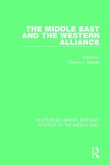Boundary limitation is a crucial issue in the Middle East, and the boundaries marked out during the years 1840 to 1947 are still one of the major issues in today's political discussions concerning Israel and its surrounding countries.
This book, which is based on extensive archival research, deals with the first stage of the delimitation of the boundaries of modern Palestine, between the years 1840 and 1947. During this period, the boundaries of Palestine were staked out by foreign, imperial forces (Britain, France and the Ottoman Empire) which placed them according to their desires, without considering local needs or ideas. For the first time, thanks to the fascinating evidence revealed in archives, this invaluable book reveals the hidden ambitions; the motives of different agents; and the stories of those involved in the process as well as the eventual outcome of their work, the first delimitation of the Holy Land in the modern era.
This is the first book to deal with one of the major issues in the Middle East: boundary delimitation. Archive sources are used in order to present the hidden motives and activities, the people involved and the actual process itself.
Hinweis: Dieser Artikel kann nur an eine deutsche Lieferadresse ausgeliefert werden.
This book, which is based on extensive archival research, deals with the first stage of the delimitation of the boundaries of modern Palestine, between the years 1840 and 1947. During this period, the boundaries of Palestine were staked out by foreign, imperial forces (Britain, France and the Ottoman Empire) which placed them according to their desires, without considering local needs or ideas. For the first time, thanks to the fascinating evidence revealed in archives, this invaluable book reveals the hidden ambitions; the motives of different agents; and the stories of those involved in the process as well as the eventual outcome of their work, the first delimitation of the Holy Land in the modern era.
This is the first book to deal with one of the major issues in the Middle East: boundary delimitation. Archive sources are used in order to present the hidden motives and activities, the people involved and the actual process itself.
Hinweis: Dieser Artikel kann nur an eine deutsche Lieferadresse ausgeliefert werden.








